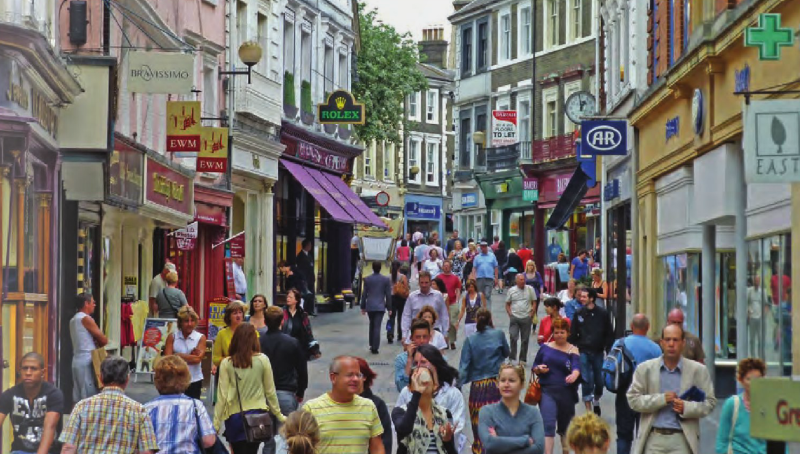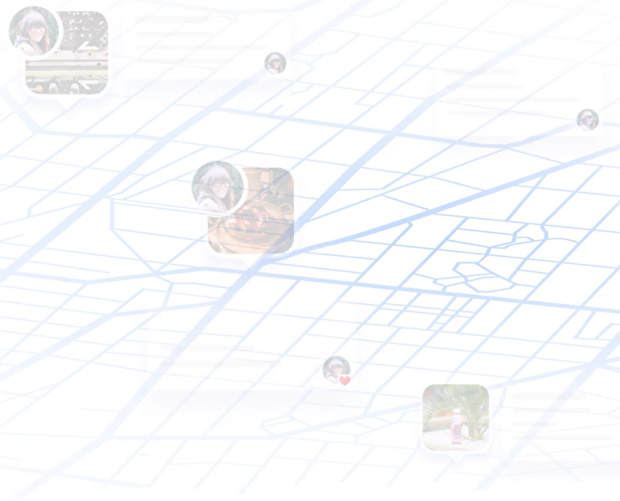SmartStreetSensor Project to Conduct Largest-ever Study Into UK High Street Footfall
- Thursday, June 30th, 2016
- Share this article:
 The Local Data Company (LDC), in partnership with University College London (UCL) and the Consumer Data Research Centre (CDRC) are to deploy 1,000 ‘SmartStreetSensors’ as part of the UK’s largest study into high street footfall patterns and impacts.
The Local Data Company (LDC), in partnership with University College London (UCL) and the Consumer Data Research Centre (CDRC) are to deploy 1,000 ‘SmartStreetSensors’ as part of the UK’s largest study into high street footfall patterns and impacts.
It is no secret that our High Streets are changing and the way consumers choose to shop has witnessed a drastic revolution in recent years. LDC data show that in 2015, multiple retail and leisure occupiers closed a total of 1,043 High Street stores. In contrast, 593 independent retailers opened in High Street locations. The study will attempt to uncover what this means. Is footfall really in decline or is it simply that the customer journey has changed? Do high street coffee shop brands really increase footfall? How do vacant units impact footfall? Which high street types are suffering the most, or the least?
The SmartStreetSensor Project is funded by the Economic and Social Research Council and aims to be the most comprehensive study of footfall patterns across Great Britain to date. Some 1,000 sensors will measure live footfall in 81 towns and cities across the UK. The locations have been chosen in order to offer a wide geographical spread, differing demographic profiles and a range of town centre profiles, based on health and occupancy.
LDC has spent 18 months developing and testing its SmartStreetSensor, which has been developed and built in the UK. It has partnered with UCL and the CDRC to provide the technology and a dashboard for the analysis and interpretation of the live feed of footfall data. The project is focussed specifically on High Streets. Shopping Centres and Retail Parks will be investigated in future projects.
LDC said the SmartStreetSensor devices will use a unique calibration methodology to ensure the most accurate feed of data. This process will ensure that the devices only register people walking past a specific shop and thus reflect the opportunities shop-owners have to influence their immediate High Street. The data will then be sent anonymously, analysed and stored in LDC’s data warehouse before being presented through LDC’s live dashboards. Measures from all of the stores within a given centre will then be made available for research use, and will be made available through the maps.cdrc.ac.uk website.
The SmartStreetSensor project team want to leverage LDC’s detailed knowledge of High Streets, past and present, and combine this with these unique footfall insights, as ultimately these factors determine the life or death of these places.
The project will leverage the combined expertise of the experienced technology teams at LDC and UCL. They will analyse the data and organise it in ways that will allow occupiers, local authorities, transport operators, landlords and investors to make more informed decisions.
The project is part of the much broader agenda of ESRC’s Consumer Data Research Centre to better understand places, people and the businesses that can bring economic vitality to both. Enabling decisions that are evidence-based and not over-reliant upon ‘gut-feel’.
SmartStreetSensor partners include Patisserie Valerie, Jack Wills, Tortilla, The Entertainer, Pizza Hut, Eurochange, Superdrug, Thorntons, Dixons Carphone, Itsu, Ed’s Easy Diner, Pret a Manger, Aldi, inmidtown BID and Oxfam.
Professor Paul Longley, director of the ESRC Consumer Data Research Centre (CDRC) at UCL said: “We think this project is an excellent example of how the worlds of academia and business can work together in the Big Data era. The same data that can tell a retailer how footfall translates into sales at the till can also contribute to a far better understanding of how people move around Britain’s towns and cities. This wider understanding is crucial to better assessments of the health of retail centres, as well as the still broader implications of transport and other planning policies.”
For LDC, direct Matthew Hopkinson added:
“Footfall is the lifeblood of any location, as without people you have no need for shops and without shops you have no community so understanding where, when and what type of footfall you have is critical to any stakeholder in retail and leisure places.
“The current generic footfall numbers do not provide the breadth or depth of coverage that retailers need to understand the performance of their shops. Pavement opportunity is what this data will show and that is what retailers and leisure operators can influence and therefore relate back to store sales. This data combined with rigorous academic analysis and LDC’s detailed knowledge of places and companies will enable landlords and occupiers to access previously unavailable business-critical insights.”
















